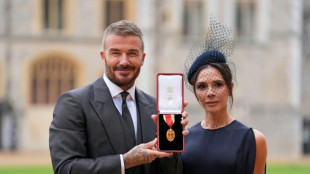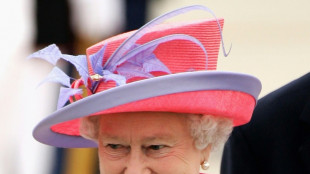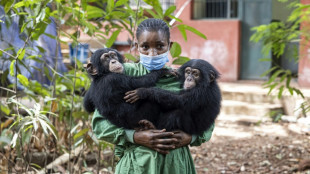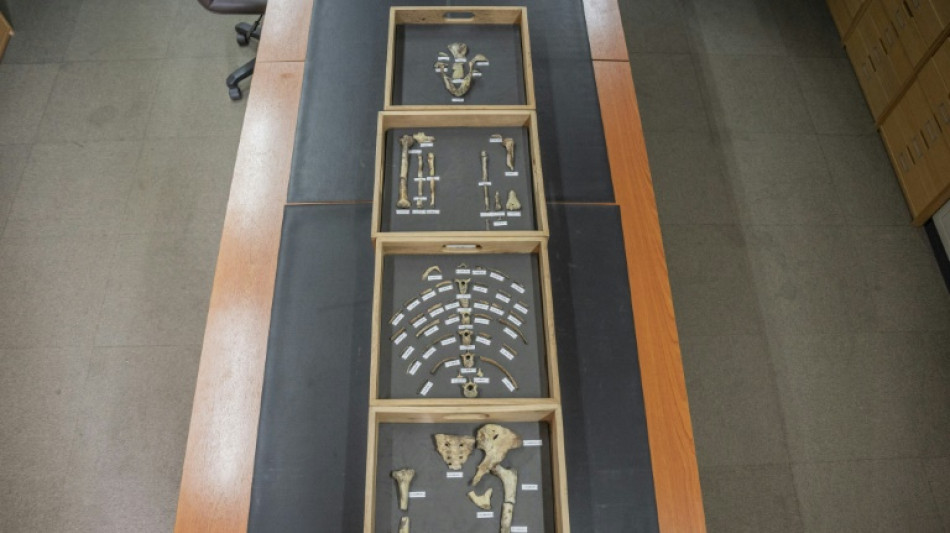
-
 Death toll tops 100 as Philippines digs out after typhoon
Death toll tops 100 as Philippines digs out after typhoon
-
Attack on key city in Sudan's Kordofan region kills 40: UN

-
 'No one could stop it': Sudanese describe mass rapes while fleeing El-Fasher
'No one could stop it': Sudanese describe mass rapes while fleeing El-Fasher
-
Champagne and cheers across New York as Mamdani soars to victory

-
 Medieval tower collapse adds to Italy's workplace toll
Medieval tower collapse adds to Italy's workplace toll
-
BMW boosts profitability despite China, tariff woes

-
 South Africa's Wiese wary of 'hurt' France before re-match
South Africa's Wiese wary of 'hurt' France before re-match
-
Asian markets sink as tech bubble fears grow

-
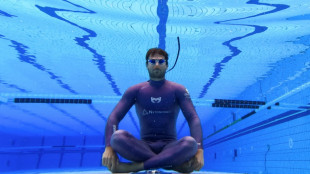 Beyond limits: Croatian freediver's breathtaking record
Beyond limits: Croatian freediver's breathtaking record
-
Tottenham supporting Udogie after alleged gun threat in London

-
 Thunder roll Clippers to stay unbeaten as SGA keeps streak alive
Thunder roll Clippers to stay unbeaten as SGA keeps streak alive
-
In appeal, Australian mushroom murderer alleges 'miscarriage of justice'

-
 Toyota hikes profit forecasts 'despite US tariffs'
Toyota hikes profit forecasts 'despite US tariffs'
-
Typhoon death toll soars past 90 in the Philippines

-
 Ex-France lock Willemse challenges Meafou to become 'the bully'
Ex-France lock Willemse challenges Meafou to become 'the bully'
-
Ukrainians to honour sporting dead by building country they 'died for': minister

-
 At least 7 dead after UPS cargo plane crashes near Louisville airport
At least 7 dead after UPS cargo plane crashes near Louisville airport
-
US Supreme Court hears challenge to Trump tariff powers

-
 US government shutdown becomes longest in history
US government shutdown becomes longest in history
-
India's Modi readies bellwether poll in poorest state

-
 Green goals versus growth needs: India's climate scorecard
Green goals versus growth needs: India's climate scorecard
-
Where things stand on China-US trade after Trump and Xi talk

-
 Sri Lanka targets big fish in anti-corruption push
Sri Lanka targets big fish in anti-corruption push
-
NY elects leftist mayor on big election night for Democrats

-
 Injured Jordie Barrett to miss rest of All Blacks tour
Injured Jordie Barrett to miss rest of All Blacks tour
-
Asian markets tumble as tech bubble fears grow

-
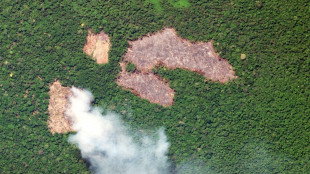 Pay to protect: Brazil pitches new forest fund at COP30
Pay to protect: Brazil pitches new forest fund at COP30
-
Australia pick 'impressive' Weatherald in first Ashes Test squad

-
 Iraq's social media mercenaries dying for Russia
Iraq's social media mercenaries dying for Russia
-
Young leftist Trump foe elected New York mayor

-
 Concerns at ILO over expected appointment of close Trump advisor
Concerns at ILO over expected appointment of close Trump advisor
-
Venus Williams to return to Auckland Classic at the age of 45

-
 No deal yet on EU climate targets as COP30 looms
No deal yet on EU climate targets as COP30 looms
-
Typhoon death toll climbs to 66 in the Philippines

-
 NATO tests war preparedness on eastern flank facing Russia
NATO tests war preparedness on eastern flank facing Russia
-
Uncapped opener Weatherald in Australia squad for first Ashes Test

-
 Liverpool down Real Madrid in Champions League, Bayern edge PSG
Liverpool down Real Madrid in Champions League, Bayern edge PSG
-
Van Dijk tells Liverpool to keep calm and follow Arsenal's lead

-
 PSG left to sweat on injuries to Dembele and Hakimi
PSG left to sweat on injuries to Dembele and Hakimi
-
Reddit, Kick to be included in Australia's social media ban

-
 Ex-Zimbabwe cricket captain Williams treated for 'drug addiction'
Ex-Zimbabwe cricket captain Williams treated for 'drug addiction'
-
Padres ace Darvish to miss 2026 MLB season after surgery

-
 Diaz hero and villain as Bayern beat PSG in Champions League showdown
Diaz hero and villain as Bayern beat PSG in Champions League showdown
-
Liverpool master Real Madrid on Alexander-Arnold's return

-
 Van de Ven back in favour as stunning strike fuels Spurs rout
Van de Ven back in favour as stunning strike fuels Spurs rout
-
Juve held by Sporting Lisbon in stalling Champions League campaign

-
 New lawsuit alleges Spotify allows streaming fraud
New lawsuit alleges Spotify allows streaming fraud
-
Stocks mostly drop as tech rally fades
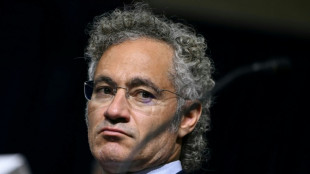
-
 LIV Golf switching to 72-hole format in 2026: official
LIV Golf switching to 72-hole format in 2026: official
-
'At home' Djokovic makes winning return in Athens


Human ancestor Lucy still has secrets 50 years after discovery
She was, for a while, the oldest known member of the human family. Fifty years after the discovery of Lucy in Ethiopia, the remarkable remains continue to yield theories and questions.
In a non-descript room in the National Museum of Ethiopia, the 3.18-million-year-old bones are delicately removed from a safe and placed on a long table.
They consist of fossilised dental remains, skull fragments, parts of the pelvis and femur that make up the world's most famous Australopithecus afarensis, Lucy.
The hominid was discovered on November 24, 1974, in the Afar region of northeast Ethiopia by a team of scientists led by Maurice Taieb, Yves Coppens, Donald Johanson, Jon Kalb, and Raymonde Bonnefille.
The 52 bone fragments, amounting to some 40 percent of Lucy's skeleton, was, at the time, the most complete ever found, and revolutionised the understanding of our ancestors.
The skeleton was initially called A.L-288-1, in reference to Afar and its geolocation.
But the researchers nicknamed it Lucy after The Beatles' song "Lucy in the Sky with Diamonds", which they listened to after celebrating their discovery.
Lucy walked on two legs and is thought to have died aged between 11 and 13 -- considered an adult for this species. She was 1.10 metres tall (3.6 feet) and weighed 29 kg (64 pounds).
For Sahleselasie Melaku, the 31-year-old head of the palaeontology department, Lucy's discovery represented an emergence from a "dark age" in our understanding of human ancestors.
"The impact of the discovery was very big in the discipline and even the whole world," he told AFP.
Lucy showed that members of the human family existed beyond three million years ago, and she also provided a template for fitting together later bone discoveries.
The amount of information that can be gleaned from the bones has allowed some highly detailed theories about Lucy's life.
A slightly deformed vertebra, for instance, "means she probably had back problems", said Melaku.
- 'Exceptional' -
Jean-Renaud Boisserie, a paleonthologist specialised in Ethiopia and the research director at the French National Centre for Scientific Research said it was an "exceptional" breakthrough for the discipline.
"We basically knew very little about the period of three million years ago, and we had nothing as complete," he said.
Lucy was often described as "the grandmother of humanity", but more recent discoveries suggest she may have been more like an aunt or a cousin, experts say.
Skeletal finds in places like Ethiopia, South Africa and Kenya have complicated the picture and led to much debate about when different species of hominid emerged and which should be classified as part of the human or chimpanzee families.
The discovery of "Toumai" in Chad in 2001 -- a skull dated to six or seven million years old -- suggested the human family may go much further back than previously thought.
Meanwhile, Lucy has yet to reveal all her secrets.
A study published in 2016 argued she spent a third of her time in trees, where she nested, and had highly developed upper limbs.
Another study that year in the American journal Plos One theorised that she died after falling from a tree.
A 2022 study in Nature, focused on Lucy's pelvis, concluded that newborn members of Australopithecus had a very immature brain, like human newborns today, and required parental support to survive.
"There are a lot of unanswered questions," said Melaku with a smile. "Especially, we don't know much more about the early livelihoods of these early human ancestors."
The museum receives frequent requests to study it, but the iconic skeleton no longer leaves Ethiopia.
Wider scientific progress and advanced equipment are opening up new avenues for research.
"The studies that can be carried out on her, on her peers, pose the scientific questions of tomorrow," said Boisserie.
"Material as exceptional as this plays a driving role in the evolution of research."
V.AbuAwwad--SF-PST

